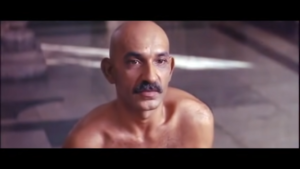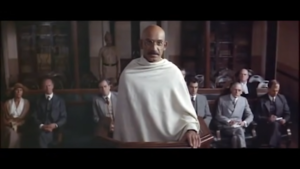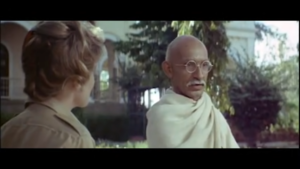Rating: 4.5 out of 5




![]()
“Live as if you were to die tomorrow. Learn as if you were to live forever.”
In the United States, blacks are not afforded the same privileges as their white counterparts. Believe me, I know from personal experience. We see protesting in America in the form of nonviolent protest. The BLM movement protested nonviolently to have their message heard. If you look back, in the 1960s, a great man name Martin Luther King help jumpstart the Civil Rights movement with nonviolent protest. No matter how rough it got with the dog and firehoses. Dr. King continued to preach nonviolence. Through all of this, Dr. King was greatly influenced by Mahatma Gandhi.

Mahatma Gandhi was one of the most influential people to have ever lived. Gandhi was an Indian lawyer and anti-colonial nationalist who taught and employed nonviolent resistance to lead the successful campaign for India’s independence from British rule. Gandhi is a biographical film directed and produced by Richard Attenborough from a screenplay by John Briley. The film doesn’t cover the birth or childhood of the great leader but starts at a critical moment in Gandhi’s life that started his mission to free India from British rule. The film is truly a powerful and emotional ride.
The film starts in 1893 when Mohandas K. Gandhi (Kingsley) is riding first class on a South African train. Everything seems fine when racist train people come along and tell him he needs to go to the back of the train. Stating that he is a lawyer, they throw him out at the next stop. Gandhi experiencing this realizes that the laws are biased against Indians and decides to start a nonviolent protest campaign for the rights of all Indians in South Africa. Gandhi is constantly arrested, but this gains him international fame until the British government relents by recognizing some rights for Indians.
The major part of the film is from 1915 to the end of World War II. In 1915, he traveled back to his home country of India. When he comes off the boat, he is met by the press, who asks if he will take up any political causes. Gandhi politely refuses in his gentle ways and states he is going back to his home city of Porbandar. Yet, behind the scenes, Gandhi planned to organize a nonviolent protest against Britain, knowing millions of Indians would follow him. Gandhi realizes that the British rule of India is harsh and oppressive.

This is when the film gets real. Gandhi’s first public protest is against the British textile industry. He urges followers to weave their own clothes and burn British garments. Yet, some people can be hardheaded as the crowd becomes angry, and they beat up the police. The most painful and heart-wrenching scene was in 1919. A group of Indian citizens gathers in the Jallianwala Bagh garden to protest an unfair town curfew. British general, Reginald Dyer, orders his troops into the garden, and they open fire, killing thousands, including women and children. During the trial, Dyer stated that he was inflicting a lesson on the Indian people that would be felt throughout the country. He showed zero remorse, and I think he is celebrated as a hero. Gandhi never gave up his mission, and in 1931, he did his most famous protest: the Salt March. He marches 240 miles from his home to the ocean to make salt in defiance of British regulations. The march was a great success and further disrupted British rule.
The latter part of the film is about what happened after World War II. When India finally gained independence in 1947, all hell broke loose once again. The country becomes divided by religion. Violence ensues, and Gandhi goes on a hunger strike until it stops. One of the most powerful scenes during this part is when he is confronted by a Hindu man who confesses that he killed a young Muslim boy since they killed his son. You can tell Gandhi is straight-up DONE. Still, he tells the man that to achieve forgiveness, he must find a young boy whose parents have been killed and raise the boy as his own, but the only thing is that the boy must be a Muslim, and the man must raise him as one. That is some profound wisdom right there. Yet, through all of this, Gandhi is assassinated by pissing off people because he wants peace. Some things will never change.

There are so many significant areas to talk about with this film. First, Ben Kingsley did an outstanding job as the legendary figure. You have to give the man props. Kingsley must’ve called upon the spirit of Gandhi because he embodied the man in every aspect. He sounded like the legendary figure and even had the same walk and mannerisms. You have to give major props to Kingsley and applaud his performance. He made this film go.
Another who needs to be praised is Richard Attenborough. The first time I ever heard of Attenborough was in Jurassic Park. As a director, he should be praised because he genuinely seemed to love shooting and showing the story of Gandhi. Attenborough made sure that you went on a journey in Gandhi’s life, from the moment he was thrown from the train to his assassination.
Even though this film is long, it doesn’t seem like it is almost or is three hours long. It goes by fast and has well-placed scenes that will keep you interested. Most of all, the film will make you want to learn about India and how this legendary man went on his quest for independence. Gandhi was an influential figure who inspired many from within India and across the world. Give honor and know that great goals can be accomplished without violence.